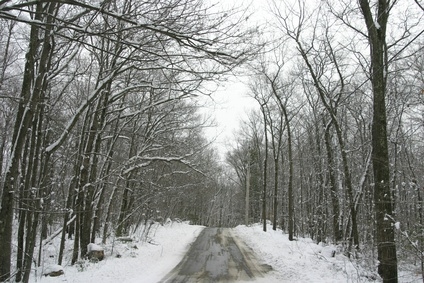
When winter weather hits, many of us would rather stay home than endure dangerous driving situation. Snow-covered and icy roads can create driving difficulties and hazards, especially for an inexperienced driver or one not accustomed to winter-weather driving. Attempting to drive your car uphill on ice can be difficult. One one hand, you'll be tempted to drive slowly to avoid skidding. On the other hand, if you drive too slowly, you could lose momentum and slide backward down the hill.
Keep a safe distance between yourself and other vehicles on the road--keep three times the distance you'd keep in regular driving conditions.
Watch any vehicles ahead of you for signs of skidding and slippage.
Stay on a path on the road that will provide the best traction for your vehicle. If you can see an obvious path other cars before you have taken, this may be your best bet.
Drive at a steady, slow pace. This will allow you to react in the event that your tires start to slip or skid on the ice.
Drive in a lower gear, such as second gear, as this will prevent you from the need to brake so often and will allow you to drive slower. From a stop, consider starting in second gear.
Correct skidding by taking your foot off the gas and brake. Don't steer; instead, let the car slow until traction resumes, then gently turn the steering wheel so the tires are facing the direction you want to go. Overcorrecting with sudden jerks and turns of the wheel could cause the car to spin out of control.
Avoid the urge to brake, as braking could lock you into a dangerous, out-of-control skid and right into an obstacle.
Remove your foot from the accelerator if you start to skid on ice. Allow the wheels to regain traction before slowly pressing the accelerator again.